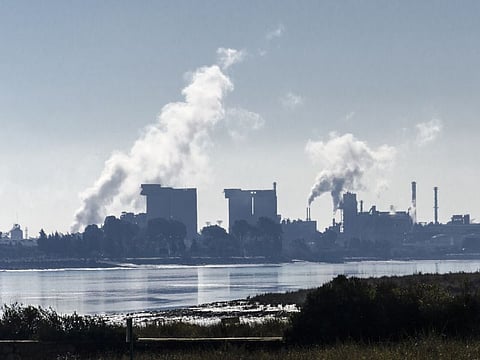WEDNESDAY, April 19, 2017 (HealthDay News) -- Air quality in the United States is improving overall, but not enough for the nearly 40 percent of Americans who live in counties with unhealthy levels of air pollution.
That's the conclusion of the American Lung Association's annual report, which shows that 125 million Americans were exposed to high levels of either ozone or particle pollution in 2013-15. This puts them at risk for premature death and other serious health threats such as lung cancer, asthma attacks, cardiovascular damage, and developmental and reproductive problems, the report said.
"This year's 'State of the Air' report is a testament to the success of the Clean Air Act, which has reduced air pollution in much of the nation," Harold Wimmer, president and CEO of the American Lung Association, said in a news release from the organization.
"As a result, Americans' lung health is far better protected today than it was before the Clean Air Act health protections began nearly five decades ago. However, this report adds to the evidence that the ongoing changes in our climate make it harder to protect human health. As we move into an ever warmer climate, cleaning up these pollutants will become ever more challenging, highlighting the critical importance of protecting the Clean Air Act," Wimmer said.
The largest improvements in air quality result from continuing reductions in high ozone days and levels of year-round particle pollution, the report found.
"Even with the ongoing improvements, too many people in the United States live where the air is unhealthy for them to breathe," Wimmer said. "This is simply unacceptable. Everyone has a fundamental right to breathe healthy air. Our nation's leaders must do more to protect the health of all Americans."
Sources of particle air pollution include wildfires, wood-burning devices, coal-fired power plants and diesel engines. The microscopic particles lodge deep in the lungs and can cause asthma attacks, heart attacks and strokes, as well as lung cancer, the lung association said.
The five cities with the highest year-round particle pollution levels are all in California: Bakersfield; Visalia-Porterville-Hanford; Fresno-Madera; San Jose-San Francisco-Oakland; and Los Angeles-Long Beach.
The five cities with the cleanest air in 2013-15 were: Burlington-South Burlington, Vt.; Cape Coral-Fort Myers-Naples, Fla.; Elmira-Corning, N.Y.; Honolulu, Hawaii; and Palm Bay-Melbourne-Titusville, Fla.
"The Clean Air Act is the most important tool in the fight for healthy air; it has successfully saved lives and improved health by driving emission reductions for more than 47 years, as 'State of the Air' continues to document," Wimmer said.
"We urge President Trump, EPA Administrator Scott Pruitt and members of Congress to fully fund, implement and enforce the Clean Air Act for all pollutants -- including those that drive climate change and make it harder to achieve healthy air for all," he said.
More information
The California Environmental Protection Agency has more on the health effects of air pollution.


